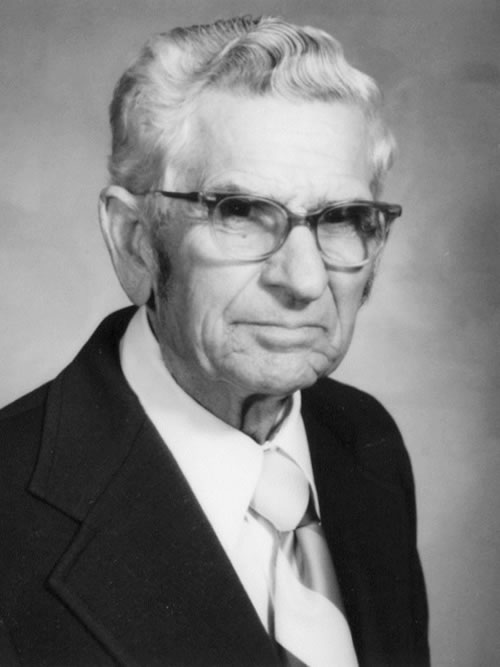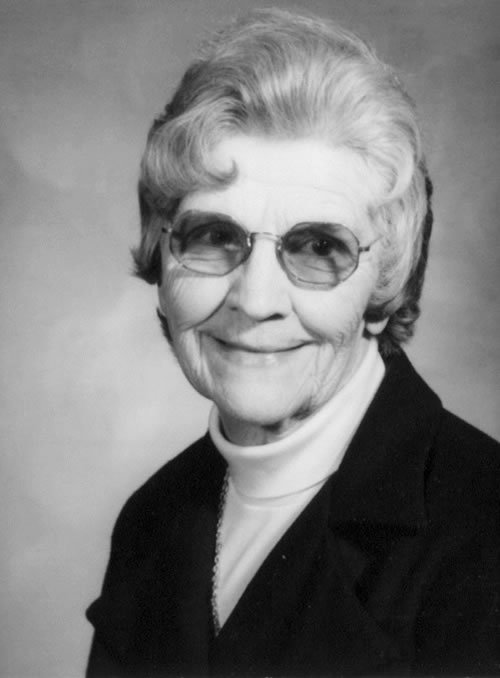Their Final Sacrifice
(The following was taken from the book A Tree God Planted by Troy Damron)
The barren, windswept plains of the Texas panhandle do not readily attract the casual visitor. In fact, those accustomed to the solitude of the mountains or to the bustle of the fertile, well-watered valleys of our country might see in the plains only foreboding and endless desolation. The natives of the area will tell you that there are places in the panhandle where one can look east for two whole days.
There is something awesome and majestic about the Texas plains that leaves an indelible imprint upon its inhabitants. There can be little doubt that those who face the challenges of this sometimes inhospitable land and win are in turn molded and shaped by their experiences and their environment. If the sturdy oak is to meet successfully the challenges of the elements, it cannot be grown in a hothouse. Accordingly, those who grow in a rugged and sometimes hostile environment often develop a strength of character that will not often be found amongst those who live in more luxurious surroundings.
But the land and the climate are not the only forces that help mold one’s character. It must be recognized also that the sturdy, God-fearing pioneer stock from which one is descended has played a part. The catalyst in the crucible in which character is formed is a humble faith in the sovereign and divine Creator who cares for His children. Into such an environment and with such a heritage, Paul Isaac Williams was born near Plainview, Texas on June 21, 1903.
Where the gentle, rolling foothills of the Blue Ridge Mountains join the South Carolina Piedmont, lies the small town of Pickens. In this town, on April 22, 1907, Mary Helen Nealy was born. If Paul Williams was influenced and molded by the environment into which he was born, the same can certainly be said of Mary Nealy. Although the backgrounds of these two were quite different, God in His infinite wisdom formed the two lives in such a way that, when He eventually brought them together, the two complemented each other.
Mary Nealy was a lady in the highest and best sense of the word. She grew up near enough to the mountains to be influenced by the homespun philosophy of the mountain people. She also traveled in the traditional culture of the old South and absorbed much of its beauty and grace. She knew about magnolia trees and pomegranates and jasmine bushes, and much later these all found a place at her beautiful home in Toccoa Falls. But crowning her life were a deep and sincere faith in God and a passionate desire to serve Him with her life.
In the providence of God, the eventual meeting of Paul and Mary was to take place at Toccoa Falls College where both had enrolled as students in the early 1920s. Could Paul have sensed that beautiful, black-haired Mary Nealy had been planned by God just for him? We may not know, but a rather significant exchange took place that first night between Paul and his roommates. Having carefully scrutinized the new crop of young women at the Institute, Paul announced to his friends, “You boys leave that black-haired Nealy girl alone. She is mine!†They apparently agreed, and so far as is known, Mary Nealy never objected.
The school years passed all too quickly, and graduation came in 1927. The courtship of Paul and Mary had made progress, but now they faced a parting of the ways. Paul,  having become convinced that God was not calling him into a full-time ministry, returned to Texas and took up his duties on the family farm. Mary, seeking to fulfill her commitment to Christian service, went to Cuba as a missionary. In God’s time, however, both soon returned to Toccoa Falls where they were married on April 29, 1928.
having become convinced that God was not calling him into a full-time ministry, returned to Texas and took up his duties on the family farm. Mary, seeking to fulfill her commitment to Christian service, went to Cuba as a missionary. In God’s time, however, both soon returned to Toccoa Falls where they were married on April 29, 1928.
Mr. and Mrs. Paul Williams returned to Texas and by 1947 had become prosperous wheat farmers. The prosperity of this part of north Texas was ensured when it was found that these plains were located over a vast underground lake of fresh water which could be tapped with deep wells for irrigation purposes. During this time three children joined the family—Beth, Neale, and Paul, Jr.
In 1947, Paul and Mary gave some thought to becoming more directly involved in Christian work. While on a visit to Mary’s relatives at Pickens, they contacted Dr. Forrest and Kelly Barnes at Toccoa Falls. It was proposed that Paul and Mary join the school staff, Paul as supervisor of the farm and dairy and Mary as teacher of Child Evangelism and supervisor of Christian Service for young women. They accepted the proposal on one condition—Paul insisted that he must receive his paycheck regularly and on time. To ensure this, he gave Mr. Barnes the full amount of his first year’s salary in advance!
From 1947 to 1977, Paul and Mary Williams served the Lord and the school in ways too numerous to mention. They earned the love and respect of the Toccoa Falls family and most of the surrounding community as well. Eternity alone will reveal the measure of the contribution of this devoted couple. Many times when the school had a great need to meet pressing bills, Paul and Mary would make a contribution to meet the payments themselves. If the dairy needed new equipment or a load of feed, Paul would buy it himself. If a skeptic were to tell him that a certain thing could not be done, he immediately proceeded to prove the person wrong. He believed that the word can’t, when used in connection with something that should be done, must not exist in one’s vocabulary.
In addition to their many contributions to the school, Paul and Mary gave several thousand dollars each year through the campus church to help former students who were on the mission field. Paul was also a member of the decision making executive committee of the school until it was abolished in the reorganization of 1974-75.
Two nephews enrolled in the school and naturally referred to their two relatives as “Uncle Paul†and “Aunt Mary.†Soon, the TFC family picked up these designations and thereafter used them endearingly.
In the fall of 1977, Aunt Mary asked some friends of the school to pray hard for the college. She felt that something big was going to happen that would help the school. On November 6, 1977, the “something big†happened. The dam that held back Kelly Barnes Lake above the campus broke, and a wall of water crashed down through the narrow valley, bringing death and destruction in its path. “Uncle Paul†and “Aunt Mary†were two of the thirty-nine victims.
The indomitable faith and courage of the survivors of this tragedy focused the attention of the world on the tiny college in Georgia. Large sums of money and other kinds of help poured in from all directions. The prospect of survival for the college, with an expanded ministry to the ends of the earth, was never brighter than it is today. We can rejoice in this renewed strength, but with heavy hearts we must contemplate the great price that was paid. “Uncle Paul†and “Aunt Mary†who had contributed so much to the life of the school, were among those who were called upon to make this last sacrifice.
A memorial service for these two loved ones was held in a college chapel that could not begin to accommodate the crowds that came to pay their last respects. The three children, Beth, Neale, and Paul, Jr., in a display of courage, gave testimonies to the influence of their parents’ lives on their own lives and on those of their children. The service was not a funeral in the traditional sense, but rather a celebration honoring the lives of these saints of God.
Flags flew at halfmast at all the county schools where Mary’s Christian Service girls had gone with choruses and Bible stories. The greatest memorials to this devoted couple will always be those that have been established in the hearts of the many who knew them and in the spiritual traditions of the school that they loved and served.

Paul and Mary, Beth, Neale, and Paul, Jr. Williams

Paul Williams

Mary Williams
